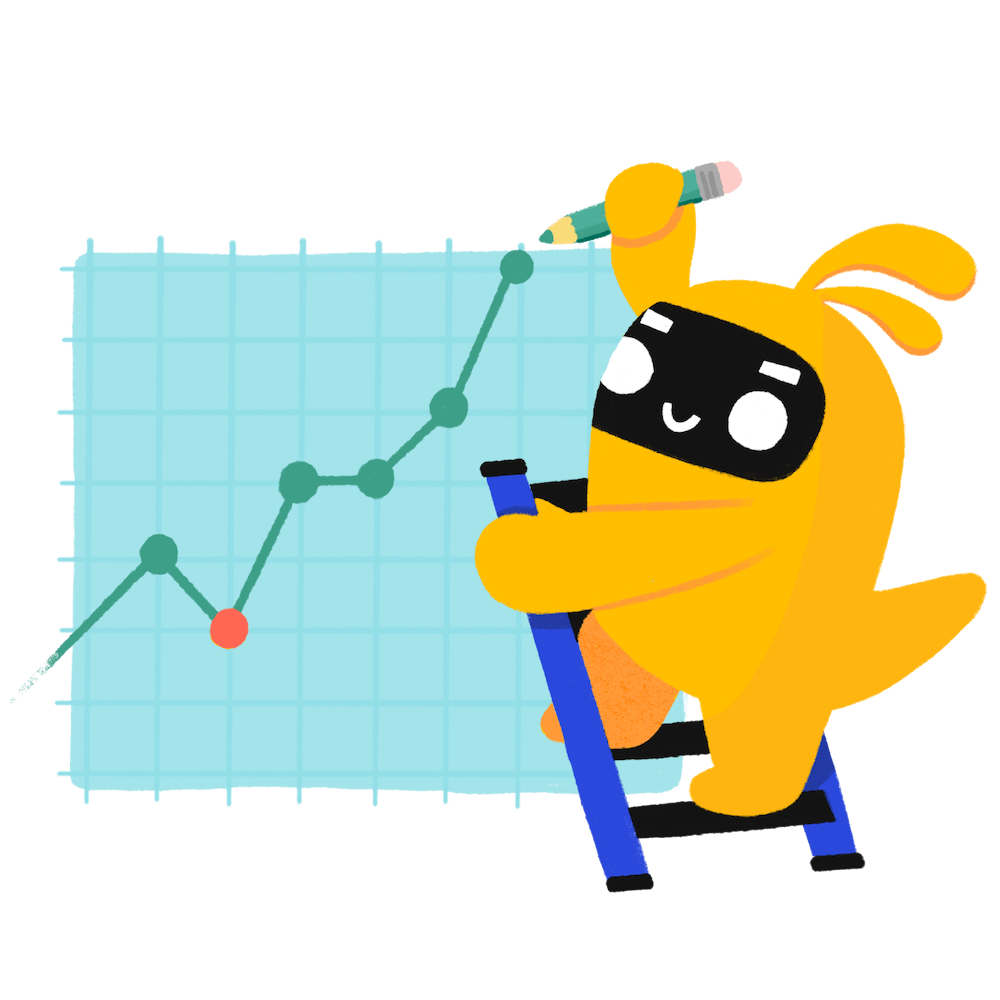2 customisable OKR examples for Process Orchestration
What are Process Orchestration OKRs?
The Objective and Key Results (OKR) framework is a simple goal-setting methodology that was introduced at Intel by Andy Grove in the 70s. It became popular after John Doerr introduced it to Google in the 90s, and it's now used by teams of all sizes to set and track ambitious goals at scale.
Creating impactful OKRs can be a daunting task, especially for newcomers. Shifting your focus from projects to outcomes is key to successful planning.
We've tailored a list of OKRs examples for Process Orchestration to help you. You can look at any of the templates below to get some inspiration for your own goals.
If you want to learn more about the framework, you can read our OKR guide online.
Building your own Process Orchestration OKRs with AI
While we have some examples available, it's likely that you'll have specific scenarios that aren't covered here. You can use our free AI generator below or our more complete goal-setting system to generate your own OKRs.
Feel free to explore our tools:
- Use our free OKR generator
- Use Tability, a complete platform to set and track OKRs and initiatives, including a GPT-4 powered goal generator
Our customisable Process Orchestration OKRs examples
You will find in the next section many different Process Orchestration Objectives and Key Results. We've included strategic initiatives in our templates to give you a better idea of the different between the key results (how we measure progress), and the initiatives (what we do to achieve the results).
Hope you'll find this helpful!
1. OKRs to streamline financial application processes through process orchestration
Streamline financial application processes through process orchestration
Decrease average process execution time by 20% compared to previous quarter
Achieve 100% compliance with regulatory requirements in financial process orchestration
Implement necessary process changes and updates to ensure 100% compliance
Identify gaps in regulatory compliance and develop corrective action plans
Continuously monitor and evaluate the effectiveness of the revised financial process orchestration
Conduct a thorough review of current financial process orchestration practices
Ensure process orchestration platform uptime of 99.9% for seamless application integration
Conduct regular disaster recovery tests to ensure seamless application integration in case of failures
Regularly update and patch the process orchestration platform for improved stability and performance
Implement a proactive monitoring system to quickly identify and resolve potential issues
Set up a redundant infrastructure for the process orchestration platform
Increase cross-application data integration rate to 95% for financial processes
Conduct a thorough audit to identify barriers to cross-application data integration
Continuously monitor and refine integration processes to ensure high data integration rate
Provide comprehensive training to employees on using integrated data systems effectively
Implement standardized data formats and protocols to streamline data integration processes
2. OKRs to build a process orchestration system
Improve process efficiency and effectiveness through an automated orchestration system
Increase process scalability by integrating the system with external tools and data sources
Achieve a 90% reduction in manual errors by implementing automated quality checks and validations
Develop and implement automated quality check systems for error detection and prevention
Identify and analyze existing manual error-prone processes for automation
Continuously refine and update automated validation procedures based on feedback and findings
Conduct regular audits to monitor the effectiveness of automated quality checks
Improve user satisfaction by maintaining an average response time of less than 5 seconds
Reduce process execution time by 20% through system optimization and streamlined workflows
Streamline and automate manual processes to eliminate unnecessary steps and reduce execution time
Analyze system performance bottlenecks to identify areas for optimization and improvement
Collaborate with stakeholders to identify and resolve any workflow inefficiencies or bottlenecks
Prioritize and implement software upgrades or patches to enhance system efficiency and performance
Process Orchestration OKR best practices to boost success
Generally speaking, your objectives should be ambitious yet achievable, and your key results should be measurable and time-bound (using the SMART framework can be helpful). It is also recommended to list strategic initiatives under your key results, as it'll help you avoid the common mistake of listing projects in your KRs.
Here are a couple of best practices extracted from our OKR implementation guide 👇
Tip #1: Limit the number of key results
The #1 role of OKRs is to help you and your team focus on what really matters. Business-as-usual activities will still be happening, but you do not need to track your entire roadmap in the OKRs.
We recommend having 3-4 objectives, and 3-4 key results per objective. A platform like Tability can run audits on your data to help you identify the plans that have too many goals.
 Tability's audit dashboard will highlight opportunities to improve OKRs
Tability's audit dashboard will highlight opportunities to improve OKRsTip #2: Commit to weekly OKR check-ins
Don't fall into the set-and-forget trap. It is important to adopt a weekly check-in process to get the full value of your OKRs and make your strategy agile – otherwise this is nothing more than a reporting exercise.
Being able to see trends for your key results will also keep yourself honest.
 Tability's check-ins will save you hours and increase transparency
Tability's check-ins will save you hours and increase transparencyTip #3: No more than 2 yellow statuses in a row
Yes, this is another tip for goal-tracking instead of goal-setting (but you'll get plenty of OKR examples above). But, once you have your goals defined, it will be your ability to keep the right sense of urgency that will make the difference.
As a rule of thumb, it's best to avoid having more than 2 yellow/at risk statuses in a row.
Make a call on the 3rd update. You should be either back on track, or off track. This sounds harsh but it's the best way to signal risks early enough to fix things.
How to turn your Process Orchestration OKRs in a strategy map
Quarterly OKRs should have weekly updates to get all the benefits from the framework. Reviewing progress periodically has several advantages:
- It brings the goals back to the top of the mind
- It will highlight poorly set OKRs
- It will surface execution risks
- It improves transparency and accountability
Spreadsheets are enough to get started. Then, once you need to scale you can use a proper OKR platform to make things easier.
 Tability's Strategy Map makes it easy to see all your org's OKRs
Tability's Strategy Map makes it easy to see all your org's OKRsIf you're not yet set on a tool, you can check out the 5 best OKR tracking templates guide to find the best way to monitor progress during the quarter.
More Process Orchestration OKR templates
We have more templates to help you draft your team goals and OKRs.
OKRs to improve the effectiveness and security of Identity Access Management (IAM) initiatives
OKRs to ensure evident quality work in projects to prevent issues
OKRs to enhance autonomous, highly effective project management skills
OKRs to increase programmer productivity, quality, and happiness through the use of AI Tools
OKRs to enhance communication and technical proficiency in customer interactions
OKRs to reduce the count of major incidents significantly
OKRs resources
Here are a list of resources to help you adopt the Objectives and Key Results framework.
- To learn: What is the meaning of OKRs
- Blog posts: ODT Blog
- Success metrics: KPIs examples
Create more examples in our app
You can use Tability to create OKRs with AI – and keep yourself accountable 👀
Tability is a unique goal-tracking platform built to save hours at work and help teams stay on top of their goals.
 1 Create your workspace
1 Create your workspace 2 Build plans in seconds with AI
2 Build plans in seconds with AI 3Track your progress
3Track your progress